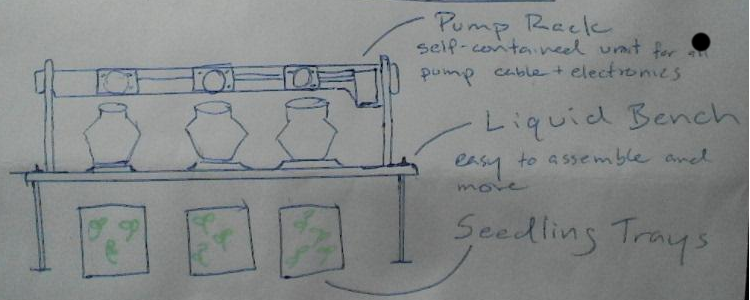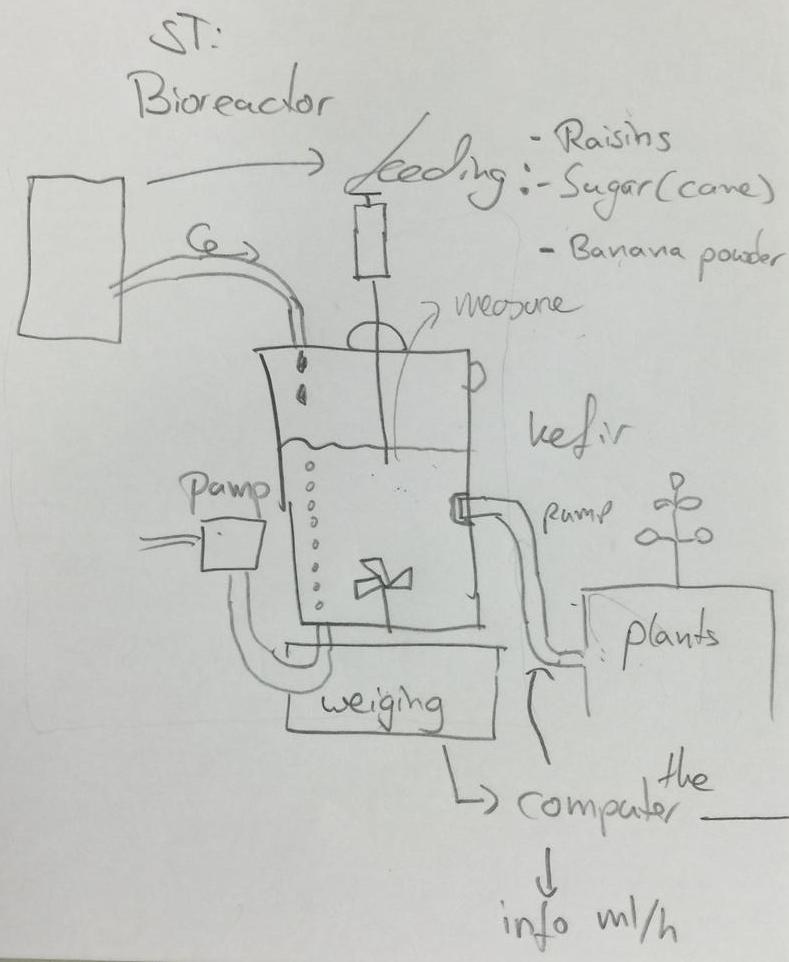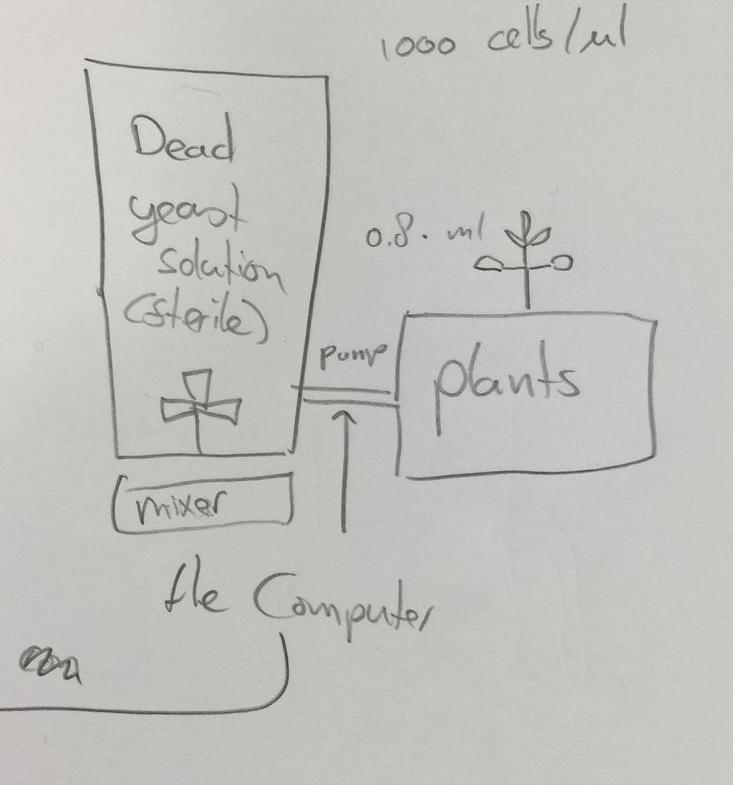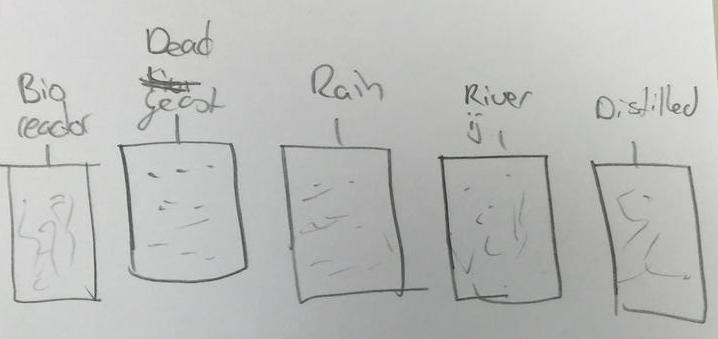Experiment for Comparatively Studying the Suitability of Pro-Biotic Liquids with Plant Growth
Table of Contents
1 Introduction
Inspired by a desire to demonstrate self-evidently, on human scale, the effects of probiotic microorganisms. This project aims for insight by comparing plants' development in presence of probiotic liquids.
Designed to push the limits of strict scientific standards by systematically exploring data in loose-quantization environment, this experiment simply addresses the issues of microscopic-scale and the difficulty of measuring living processes.
In the case of probiotics, their living and changing nature has prevented the collection of "hard data." Typically, scientific requirements preclude studying the effect of living cultures; focusing instead a microscope on a dead and stained cell or the inert bio-mass of a culture.
To address this shortcoming, a change of perspective is required to gather information which may prove insightful. By lessening the standard of proof to permit some flexibility, this project aims to provide insight into previously un-quantifiable phenomena.
Rather than considering probiotic cultures as consumable bio-mass, this project seeks to visually demonstrate a perspectief of symbiosis by growing plants in the presence of different experimental liquids.
2 Design
By exposing plants to different liquids and gauging their response information can be inferred about the liquids suitability for plant growth.
Seedlings are selected as the most sensitive stage of plant growth; to maximize observable effects of the experiment. By visibly observing and comparing the development of five sets of seedlings in the presence of different liquids an active comparison between liquids may be shown.

Figure 1: Experimental Apparatus Sketch
Designed to be visually attractive and didactic, the experiment should show clearly all it's workings. Most prominently: growth of the seedlings, liquids must not be obfuscated, and pumps are tertiary.
Despite visual tertiary, the pumps and their rack are the technical focus. In this case, technical challenges are inversely proportional to their visually displayed prominence. That is, growing seedlings is a rather simple process which can proceed naturally, and it is the focus. Liquids, and their generation in a steady-state bio-reactor is also something which happen at a naturel pace, but the reaction will be sustained with an automated system; the least prominent feature: pumps. Hiding the most challenging bits: a system of pragmatically-timed-pumps will be used to supply the seedlings and bio-reactor with liquids to germinate and grow.
2.1 DONE Pump rack
Designed to be an attractive and functional element, the pump rack holds the pumps and their control module above the liquid reservoir. Featuring recessed cabling and custom designed pump mounting brackets to showcase the operation of the experiment.
2.2 TODO Liquid bench
Bench serves two purposes, to display the liquids and to hold the pump rack above liquid-level.
2.3 TODO Chilled Bio-Reactor Feed Reservoir
Resurvey is filled with sugar water which is used to continuously feed the bio-reactor
2.4 Steady-State Bio-Reactor
The purpose of this bioractor is to supply a continuous stream of 'living water' at known and constant parameters.
2.4.1 DONE Reactor Design
A simple reactor with continuous feed and agitation

Figure 2: Drawing c/o Ramon Bril
2.5 Inert Bio-Reactor Control

Figure 3: Drawing c/o Ramon Bril
2.6 Drained seedling treys
Some way to drain the trays that does not make a mess.
3 Experiment

Figure 4: Drawing c/o Ramon Bril
Five identical trays of seedlings in rock-woll will be fed with exclusively experimental liquid to compare differences / effect between the liquids. Feeding Plants withe
- Distilled
- Rain
- River
- 'living water'
- control 'dead water'
3.0.1 TODO Collect Rain-Water
Design and build small rain water catchment system
3.1 Seed Trays
Each tray will have a know amount of rock-wool with an estimated field-capacity for liquid. Flow rate will be a function of the capacity such that fresh water is coming in at a sufficient rate to replace the liquid lost thru drainage, evaporation, and transpiration. But, it still needs a drain tho.
4 Needed
4.1 Woodworking Equipment + Supplies
- Router
- Table saw
- Wood boards
4.2 Skills
- Design +3D modeling